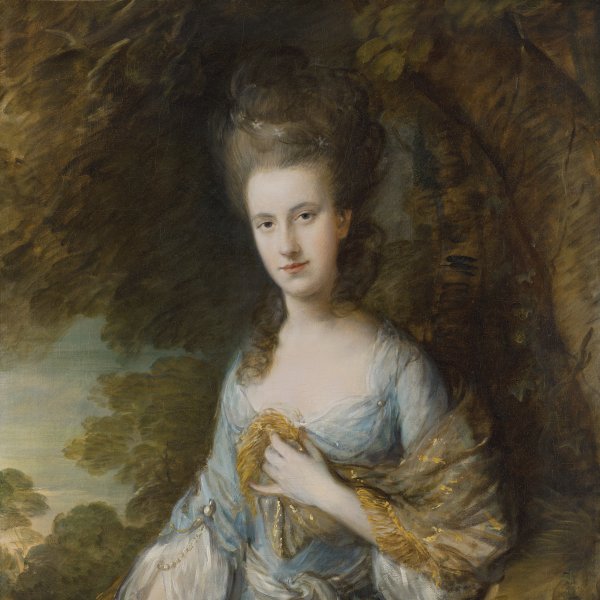Thomas Gainsborough
Sudbury, 1727-London, 1788
Gainsborough was born in Sudbury in Suffolk in 1727. From an early age he revealed great artistic ability and was sent to study in London with the French painter and printmaker Hubert François Gravelot who had been a pupil of the great French painter Antoine Watteau. From the outset Gainsborough’s work reveals the marked influence of his teacher, of Flemish painters and of the work of Anthony Van Dyck. Around 1774 he lived and worked between Ipswich and Bath, painting portraits and landscapes. In 1768 he was elected a member of the Royal Academy in London and in 1774 George III invited him to paint his portrait and that of Queen Charlotte. Gainsborough moved to London that year and remained there until his death in 1788. He became the favourite painter of the English aristocracy and together with his great rival Reynolds he is considered one of the most important British painters not just of the 18th century but of all periods. Gainsborough produced around 500 works of which more than 200 are portraits. They are characterised by the noble and refined elegance of his figures, their poetic charm, a use of predominantly cool tones of greens and blues, and a long, loose and narrow brushstroke.
Gainsborough’s works are imbued with a distinctive melancholy, an effect that he achieved through a very tenuous light that clearly echoes 17th-century Flemish landscapes. He frequently located his portraits out of doors, combining two genres in a harmonious manner. Gainsborough also painted landscapes with figures, particularly forests and views of the English countryside. In addition, he produced a large number of prints and drawings over the course of his career. He introduced technical innovations into his graphic work and was one of the first printmakers to use etching and soft-ground varnish, while his drawings are sometimes on coloured paper and mix different techniques such as chalk, crayon, watercolour and gouache.
Gainsborough’s works are imbued with a distinctive melancholy, an effect that he achieved through a very tenuous light that clearly echoes 17th-century Flemish landscapes. He frequently located his portraits out of doors, combining two genres in a harmonious manner. Gainsborough also painted landscapes with figures, particularly forests and views of the English countryside. In addition, he produced a large number of prints and drawings over the course of his career. He introduced technical innovations into his graphic work and was one of the first printmakers to use etching and soft-ground varnish, while his drawings are sometimes on coloured paper and mix different techniques such as chalk, crayon, watercolour and gouache.





